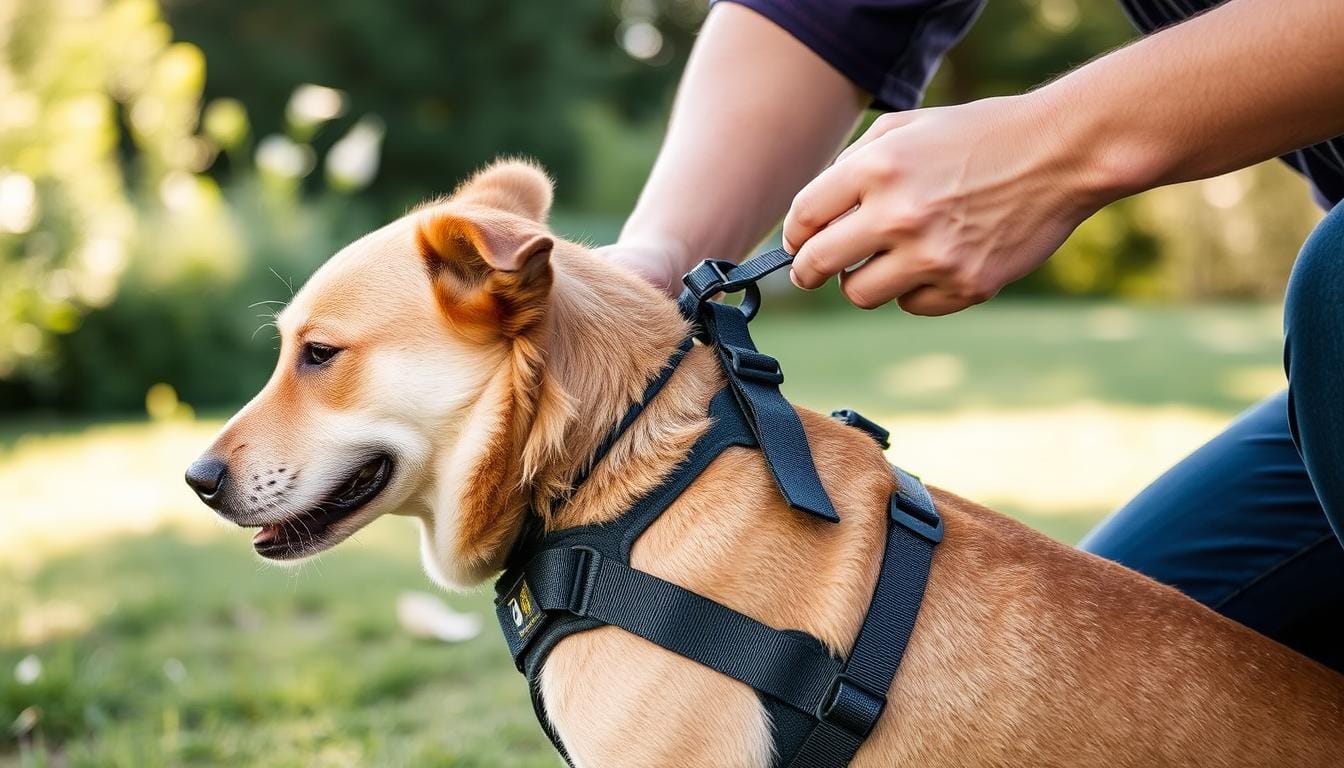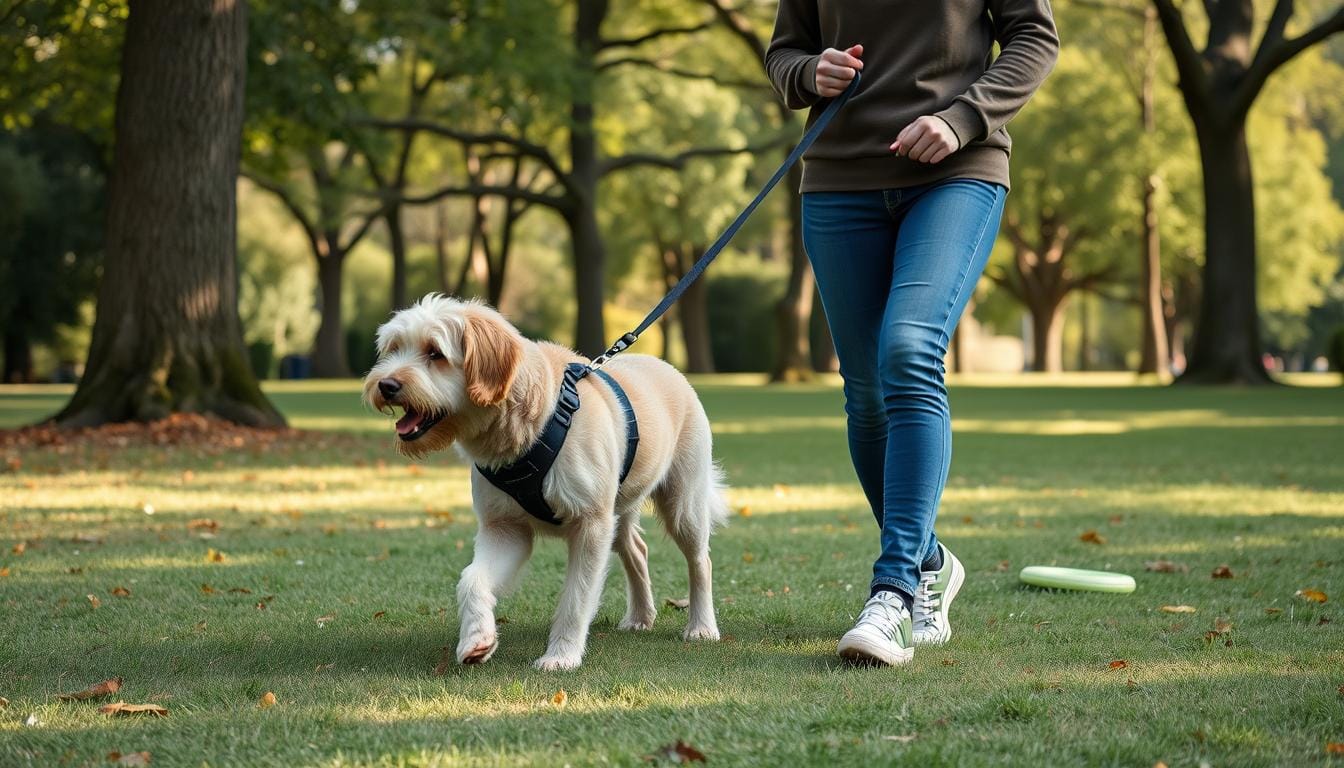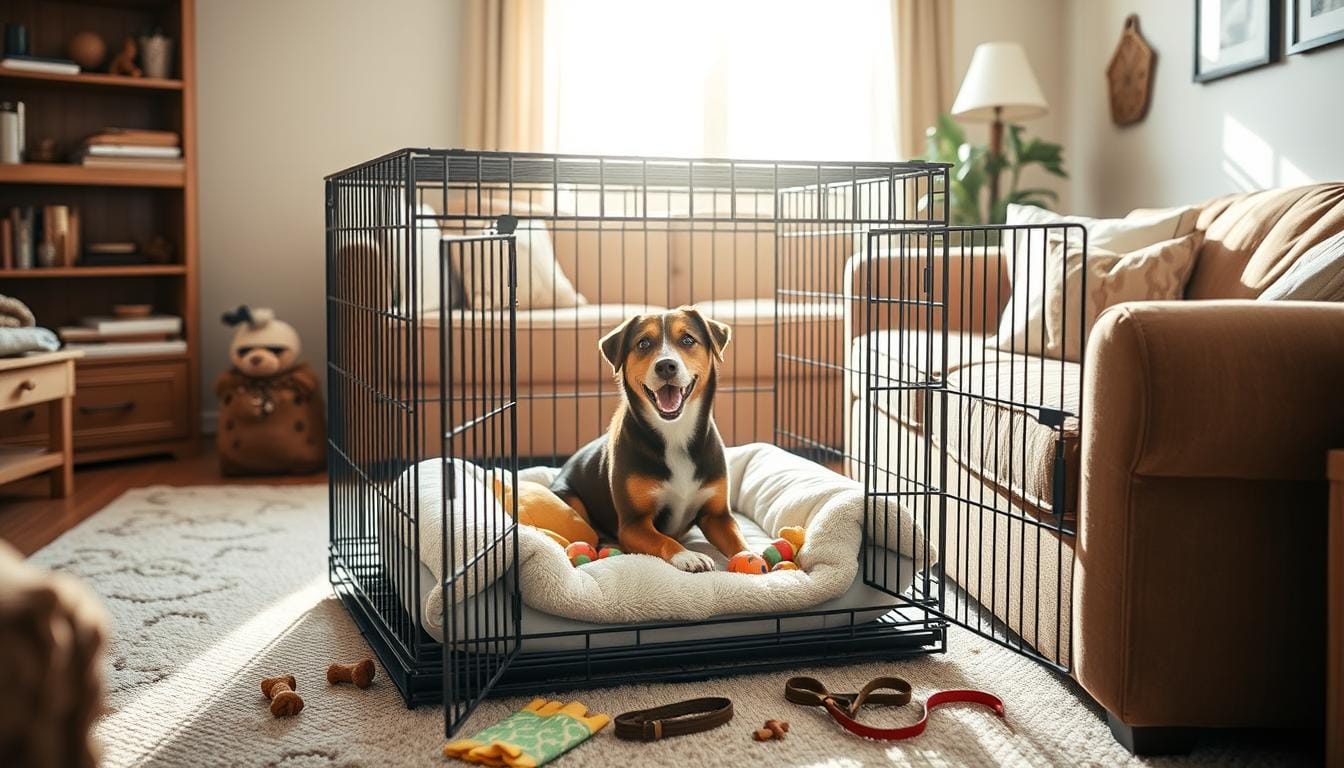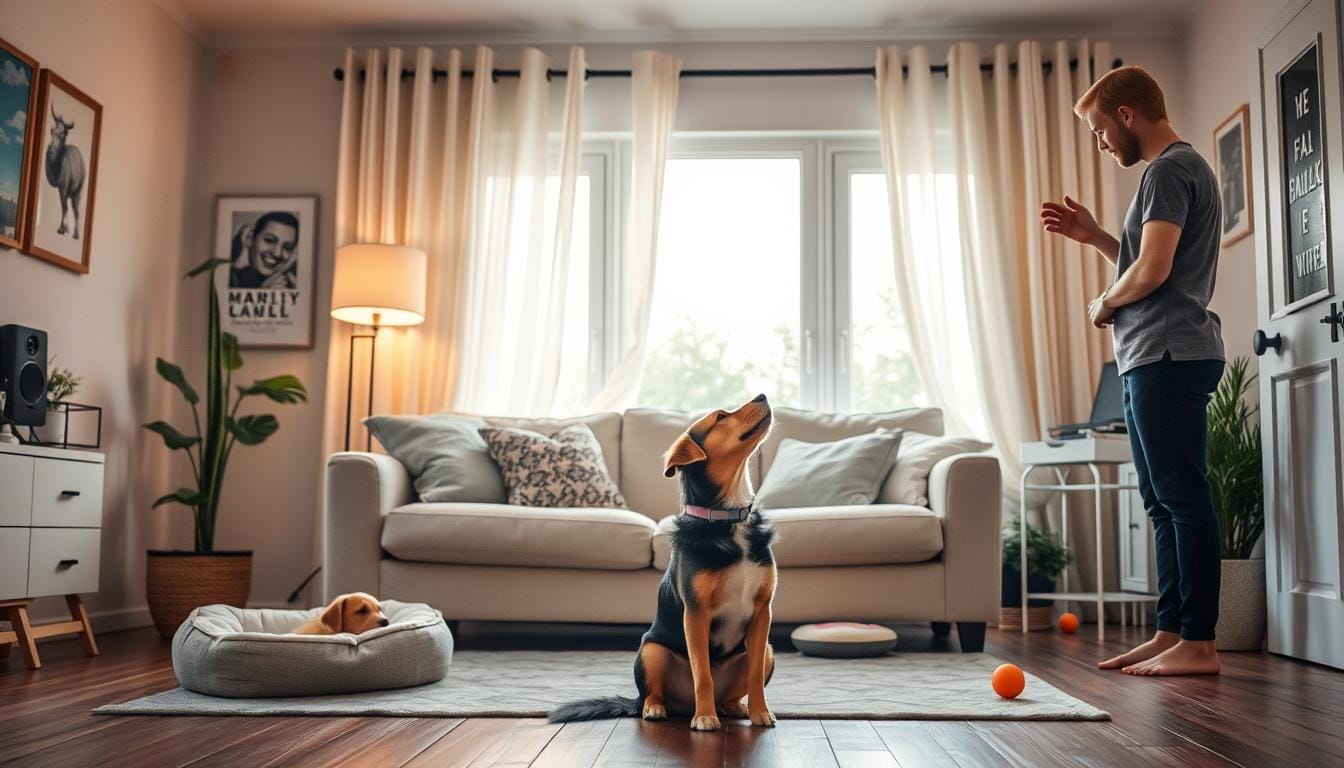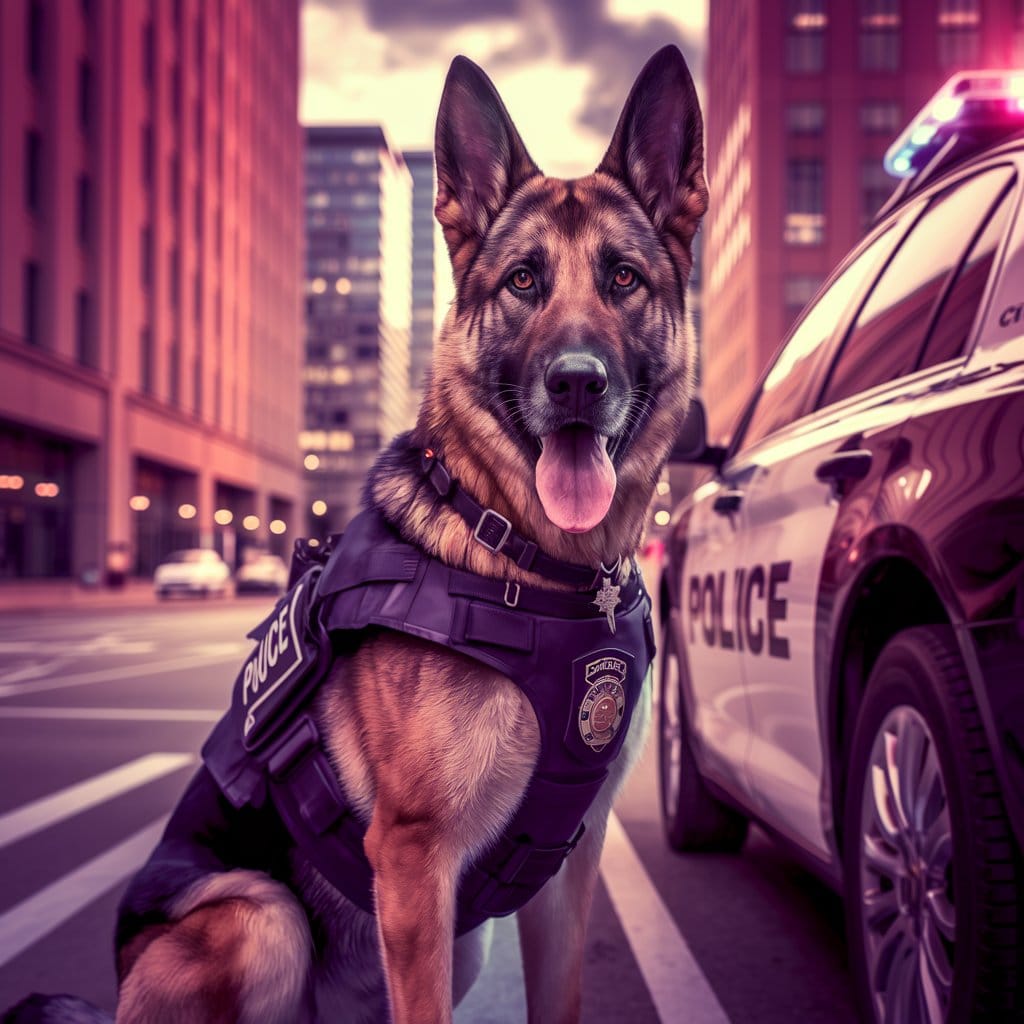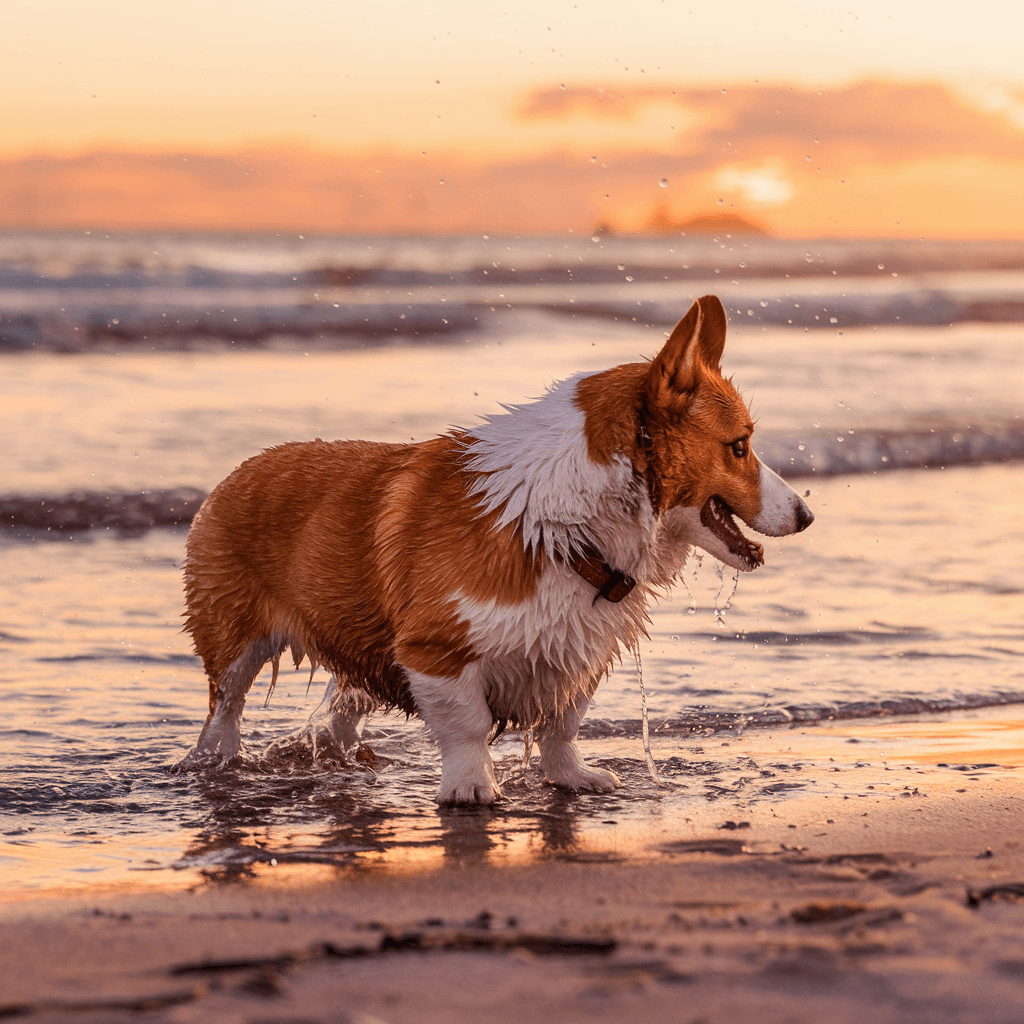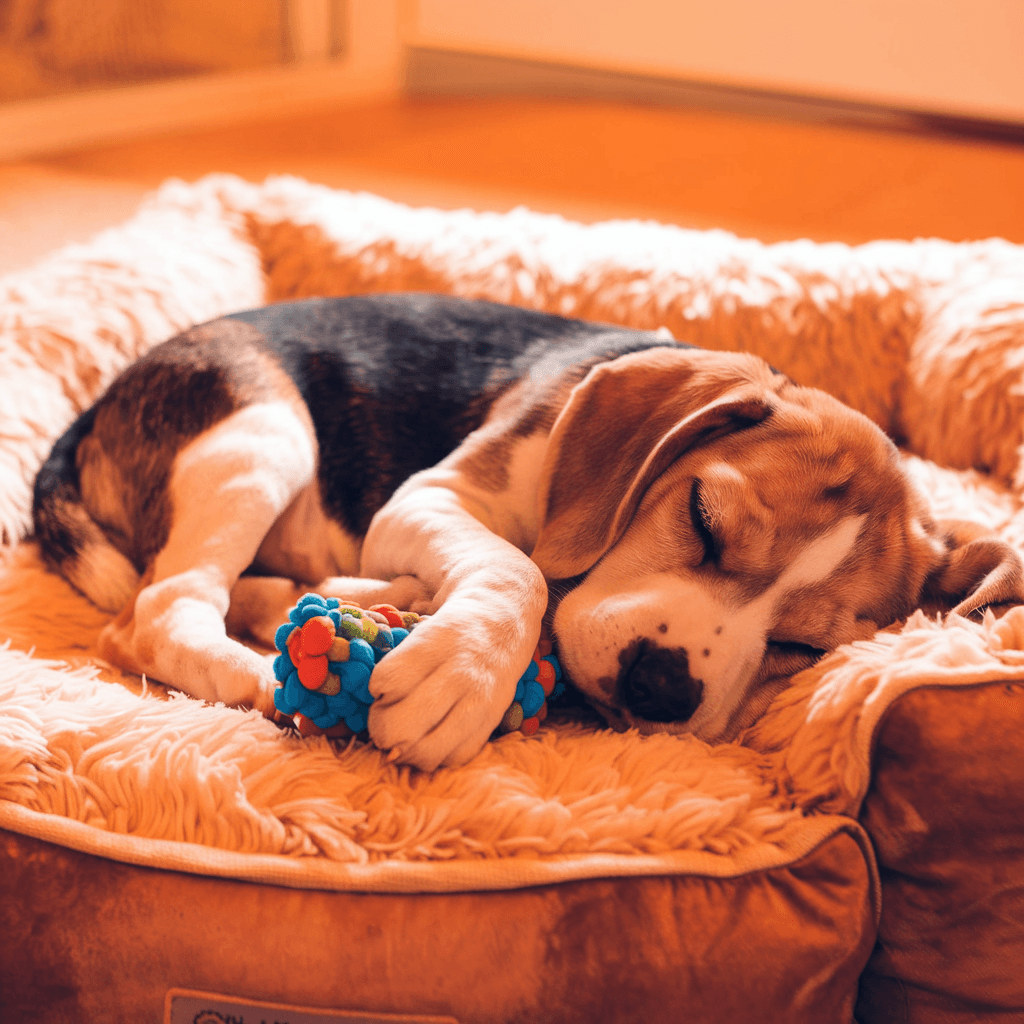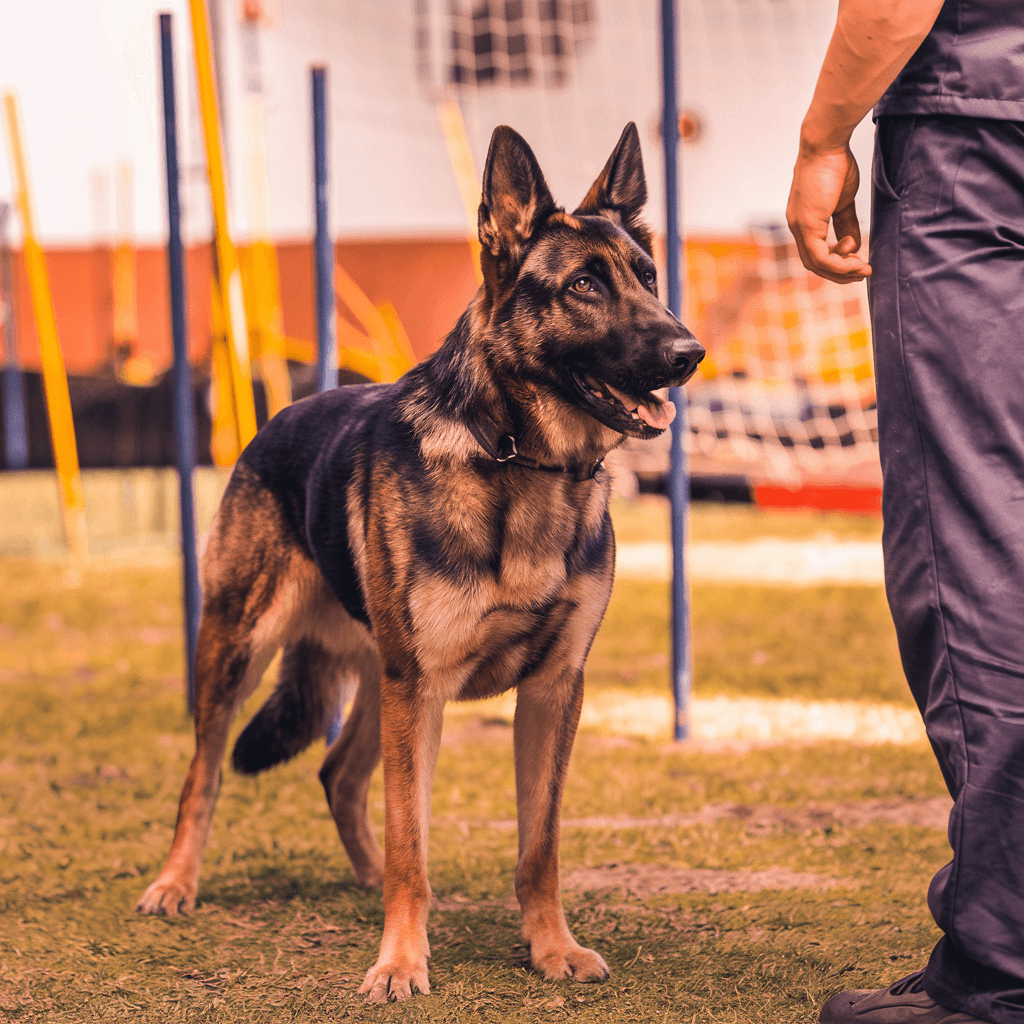Choosing the right dog harness is crucial for pet walking safety. A good harness ensures your dog’s comfort and your peace of mind. Let’s explore some key tips for picking the best harness for your dog.
Finding the right harness fit is vital for your dog’s health. A well-fitting harness helps avoid neck strain and pulling. It’s great for brachycephalic breeds, older dogs, and puppies.
Harnesses spread the pressure across the chest and shoulders, unlike collars. This makes them safer and more comfy for your dog. They’re also harder for dogs to slip out of, adding safety during walks.
Key Takeaways
- Harnesses provide better control and comfort than collars
- Proper fit is essential for your dog’s safety and comfort
- Different harness types suit various needs and breeds
- Measure your dog’s girth for the best harness size
- Consider factors like material, durability, and ease of use
- Regular adjustments ensure ongoing proper fit
- Safety features enhance visibility during walks
Understanding Dog Harnesses vs. Traditional Collars
When walking our dogs, we have to choose between collars and harnesses. Harnesses have special benefits for both dogs and their owners.
Benefits of Using a Harness Over a Collar
Harnesses give a better grip on the leash and spread out the force on the dog’s chest and shoulders. This is great for dogs that pull a lot. It’s also good for dogs with breathing problems or sensitive necks.
Impact on Dog’s Comfort and Safety
Collars are okay for calm dogs, but they can be risky for active ones. Harnesses help avoid neck injuries and breathing problems, especially in small dogs. For dogs like Bulldogs, harnesses are safer because they don’t put pressure on the neck.
Control and Training Advantages
No-pull harnesses help control dogs better, making training simpler. They help dogs stay focused on their owners, teaching them to walk nicely. These harnesses are perfect for big dogs or those learning to walk on a leash.
| Feature | Collar | Harness |
|---|---|---|
| Pressure Distribution | Neck only | Chest and back |
| Control Level | Moderate | High |
| Suitable for Pullers | No | Yes |
| Risk of Injury | Higher | Lower |
Choosing the right gear for our dogs is key for their safety and comfort. While collars are fine, harnesses are often better. They offer more support and control, especially for dogs that pull a lot.
Essential Measurements for the Perfect Fit
Finding the right harness for your furry friend is key for their comfort and safety. We’ll show you how to get the perfect fit, focusing on important measurements and adjustable harnesses.
How to Measure Your Dog’s Girth
The most important measurement is your dog’s girth. Use a fabric measuring tape to measure the widest part of their chest. This is just behind their front legs. This ensures the harness fits snugly without limiting movement.

Understanding Size Charts
Size charts differ between brands, so it’s crucial to check them. Match your dog’s measurements with the size range recommended. If your pup is between sizes, choose the larger one. Remember, a medium harness from one brand might be an extra-large in another.
The Two-Finger Rule for Proper Fitting
After picking a harness, use the two-finger rule for a proper fit. You should be able to slip two fingers between the harness and your dog’s body. This ensures comfort and prevents escape. Adjustable harnesses are great because they let you adjust the fit for your dog’s unique shape.
- Check for any skin bunching or fur indentations
- Ensure the harness sits correctly without pressing on sensitive areas
- Regularly adjust the fit, especially after grooming or weight changes
By following these guidelines, you’ll find a harness that keeps your dog secure and comfortable on all your adventures together.
Dog Harness Tips, Pet Walking Safety, Gear for Dogs
Choosing the right dog harness is key for your pet’s safety and comfort. We’ve got tips to help you pick the best harness and gear for your furry friend.
Think about your dog’s size, breed, and how active they are. For walks at night, choose harnesses with reflective materials. These make your dog 45% more visible, keeping them safer in the dark.
For dogs that like to slip out, escape-proof harnesses are a must. They keep your dog safe, preventing 16% of injuries from getting loose. If you love hiking, durable gear with handles gives you more control on tough trails.
But safety isn’t just about harnesses. Use a 6-foot leash for most walks. It gives your dog freedom while keeping them safe. Avoid retractable leashes, as they can lead to pulling and safety issues. Remember, 25% of dogs don’t like standard leashes, so pick carefully.
- Bring collapsible water bowls for hydration
- Use eco-friendly waste bags
- Pack a basic first aid kit for emergencies
- Consider cooling vests in hot weather
By focusing on safety and comfort with the right gear, walks will be fun for both you and your dog.
Types of Dog Harnesses Available
Choosing the right harness for your furry friend can make walks more enjoyable and safe. We’ll explore various types of harnesses to help you find the perfect fit for your pup.
Back-Clip Harnesses
Back-clip harnesses are the most common type you’ll find when shopping. They offer a secure leash attachment point on the dog’s back. This makes them ideal for well-behaved pups who don’t pull excessively. These harnesses are easy to put on and comfortable for dogs to wear during walks or runs.

Front-Clip Harnesses
Front-clip harnesses, often called ‘anti-pull harnesses’, are designed to discourage pulling. The leash attaches at the chest, redirecting your dog’s attention when they try to pull. This design gives you more control and can be helpful for training purposes.
Step-In Harnesses
Step-in harnesses are perfect for dogs who don’t like things slipped over their heads. Your pup simply steps into the harness, and you secure it around their body. These adjustable harnesses are easy to use and comfortable for many dogs.
No-Pull Harnesses
No-pull harnesses are specifically designed to reduce pulling behavior. They often feature both front and back clips for versatility. The no-pull harnesses distribute pressure evenly across the chest and shoulders. This makes walks more comfortable for both you and your dog.
| Harness Type | Best For | Key Features |
|---|---|---|
| Back-Clip | Well-behaved dogs | Easy to use, comfortable |
| Front-Clip | Dogs that pull | Redirects attention, more control |
| Step-In | Dogs sensitive to over-head fitting | Easy to put on, adjustable |
| No-Pull | Strong pullers | Dual clips, even pressure distribution |
When selecting a harness, consider your dog’s size, behavior, and specific needs. Remember, the right harness can make walks safer and more enjoyable for both you and your furry companion.
Materials and Durability Considerations
Choosing the right material for your dog’s harness is key. It affects both comfort and durability. We’ll look at different options to guide you in picking the best for your pet.
Nylon and Synthetic Options
Nylon harnesses are light and affordable. They’re easy to clean and come in fun designs. For energetic dogs, nylon is a top pick because it’s durable and dries fast.
Leather Harness Benefits
Leather harnesses have a timeless appeal and last a long time. They’re soft on your dog’s fur and get more comfortable over time. Though they need more care, leather is great for dogs with sensitive skin.
Mesh and Breathable Materials
Mesh harnesses are ideal for hot weather or dogs that get too hot. They’re airy and light, making them comfy for daily wear. Plus, they dry quickly, perfect for dogs who love water.
| Material | Durability | Comfort | Best For |
|---|---|---|---|
| Nylon | High | Good | Active dogs, hiking |
| Leather | Very High | Excellent | Sensitive skin, long-term use |
| Mesh | Moderate | Very Good | Warm climates, short-haired breeds |
Think about your dog’s lifestyle and where you live when picking a harness. For gear that lasts all year, look for harnesses that adjust and have removable padding. This way, you can change it up for different weather.
Safety Features and Visibility Options
We focus on keeping pets safe, especially at night. Dog harnesses with reflective stitching or materials are key for nighttime. Some harnesses even have built-in LED lights to make walks safer in the evening.
For non-reflective harnesses, adding reflective tape is a smart move. Safety harnesses for car travel add extra protection. They keep your dog safe by attaching to seatbelts during drives.
There are many high-visibility dog products out there. These include attachable collar lights, light-up collars, leashes, and vests. The Ruffwear Lumenglow High-Vis Dog Jacket is a great example. It’s made from water-repellent material and durable polyester fabric.
When picking light-up dog gear, look for long battery life and easy recharge options. For reflective gear, check the amount, placement, and quality of the reflective material.
| Product Type | Examples | Key Features |
|---|---|---|
| Attachable Lights | Nite Ize Spotlit LED Collar Light | Compact, versatile, easy to attach |
| Light-up Collars | BSEEN LED Dog Collar | 360-degree visibility, rechargeable |
| Light-up Leashes | Illumiseen LED Leash | Dual-sided illumination, multiple modes |
| Reflective Jackets | Ruffwear Lumenglow High-Vis Dog Jacket | Water-repellent, durable, highly reflective |
By choosing these safety features and visibility options, we greatly improve our pets’ safety at night. This ensures a safer experience for both dogs and their owners.
Proper Harness Adjustment and Fitting Guide
A proper harness fit is key for your dog’s comfort and safety. We’ll show you how to adjust harnesses for a perfect fit.
Initial Fitting Steps
First, measure your dog’s chest and neck. Adjustable harnesses fit your dog’s unique shape. Put the harness on your dog, with straps loose.
Then, tighten each strap slowly. Make sure you can slip two fingers between the harness and your dog’s body.
Common Fitting Mistakes to Avoid
Don’t over-tighten the harness. This can hurt your dog’s movement and comfort. Also, avoid wrong strap placement, which can cause chafing.
Always check that the harness fits well across your dog’s chest and shoulders.
Signs of Poor Fit
Look out for these signs of a bad harness fit:
- Chafing or hair loss
- Your dog trying to remove the harness
- Difficulty moving or reluctance to walk
- The harness rotating to one side
- Ability to slip out of the harness
Check and adjust the harness fit often. As your dog grows or changes, the harness should still fit well. A good harness lets your dog move freely while keeping them safe and comfortable.
| Harness Type | Fit Considerations | Best For |
|---|---|---|
| Back-clip | Snug around chest, loose around neck | Small dogs, calm walkers |
| Front-clip | Even pressure distribution | Dogs that pull |
| Dual-clip | Adjustable at multiple points | Large, strong dogs |
Special Considerations for Different Breeds
Choosing the right harness for your dog is not simple. Different breeds have unique needs for comfortable dog harnesses. Let’s look at what different dog sizes and types require.
Small Dog Requirements
Small dogs need harnesses that are light and don’t restrict them. Our survey found 51% of owners with small or long-haired dogs like vest harnesses. These harnesses spread out the pressure, keeping their necks safe.
Large Breed Specifications
Large breeds need strong, escape-proof harnesses. They should have sturdy stitching and hardware. Y-harnesses are popular among 57% of owners with large short-haired dogs for better movement. Also, 79% of experts suggest front clip strap harnesses for larger dogs for better control.
Brachycephalic Dog Needs
Brachycephalic breeds need harnesses that don’t press on their neck or face. Back-clip harnesses are best for these dogs, with 76% of owners choosing them for walks. These harnesses keep airways open and prevent breathing problems.
| Dog Type | Recommended Harness | Key Feature |
|---|---|---|
| Small Dogs | Vest Harness | Lightweight, Even Pressure Distribution |
| Large Breeds | Y-Harness or Front Clip Strap | Sturdy, Enhanced Control |
| Brachycephalic Breeds | Back-Clip Harness | Reduces Neck Pressure |
Getting the right fit is key. 87% of dog owners say it’s important to measure your dog correctly when picking a harness. By thinking about your dog’s specific needs, you’ll make sure they’re safe and comfortable while walking.
Maintenance and Cleaning Tips
It’s important to take good care of your dog’s gear. This helps it last longer and work better. We’ll give you some key tips for keeping your dog’s harnesses and leashes clean and in good shape.
Always check your dog’s harness for wear. Look at the attachment points and buckles. If you see a lot of damage, it’s time to get a new one. This keeps your dog safe while you’re out for a walk.
How you clean your gear depends on the material. Nylon and synthetic harnesses can be washed with mild soap and water. Leather harnesses need special care. Don’t soak them and use a leather cleaner instead. Here’s a quick guide for washing different types of gear:
| Material | Cleaning Method | Drying |
|---|---|---|
| Nylon/Synthetic | Mild soap and water | Air dry |
| Leather | Spot clean, leather cleaner | Air dry, avoid direct sun |
| Machine-washable | Mesh bag, gentle cycle | Air dry |
To disinfect, soak washable gear in boiling water for five minutes. Always let it air dry completely before using it. This prevents skin irritation and keeps the gear in good condition.
By following these tips, you’ll make your dog’s gear last longer. This ensures your dog stays comfortable and safe on every walk.
Conclusion
Choosing the right dog harness is key for safe and comfortable walks. Our guide on dog harness tips highlights the importance of the right gear. Studies show that 85% of dog owners find harnesses easier to use than collars.
Moreover, 60% of dogs pull more when wearing collars. This makes harnesses a better choice for many.
We’ve looked at different types of harnesses and their benefits. For example, 90% of dogs walk better with a harness. QQPETS, a top dog harness maker, offers adjustable harnesses for various needs.
Their harnesses are great for the 70% of older dogs needing help with stairs or standing. Proper fitting is essential. A well-fitted harness can prevent injuries and make dogs less likely to escape.
By following our tips, you’ll keep your dog safe and comfortable on walks. Whether you pick a simple design or QQPETS’ custom options, the right harness will make walks better for your pet.

